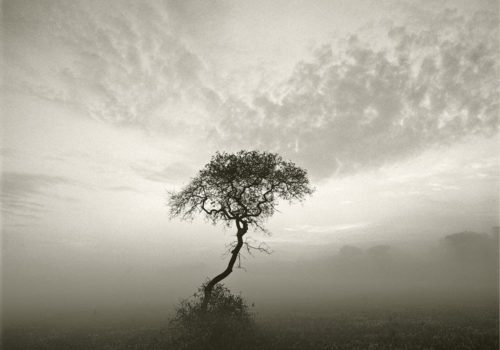Renowned nautical and nature photographer Michael Kahn’s fascination with both sailing and photography emerged during his formative years learning to sail and experimenting with photography. Kahn finally merged his two passions in 1995 while on a vacation to a lake in the Adirondack Mountains where he first encountered an intriguing boat that he felt compelled to photograph and on the same trip began making multiple exposures of one hundred year old boats racing around the lake. Kahn’s photography subjects are not only reserved for tall handmade ships and prestigious yachts, but also for some of the smallest yet graceful crafts as well as the atmospheric beauty of nature that has always fascinated him. Kahn commonly uses a 1950s era medium-format camera and painstakingly handprints his images using a process he developed over many years researching and working in darkrooms. His warm, sepia toned images demonstrate his expertise as a printer as well as a photographer.
Sara Tasini: What first drew you to photography and what keeps you there?
Michael Kahn: My mother gave me a 35mm film camera when I was 13 years old. I was introduced to black and white photography and the traditional darkroom when I was in school. Directly out of high school I went to work in a commercial studio. I did advertising and portrait work before I started to take freelance assignments for lifestyle magazines.
Sara: From where does your fascination with ships and seascapes stem?
Kahn: I love the ocean. As a child, I grew up spending summer vacations by the sea and have been drawn to ocean and boats ever since. There is such a duality to the sea. One day it is calm, colorful, and inviting. The next day, it is dark, gray, and stormy. I find all the moods and changes are very stimulating, and yet at the same time, the openness and the views are relaxing. Ever since I can remember, I have been infatuated with the sea. I swam, sailed, fished and collected shells and sharks teeth that had washed up on the sand. I hid in the dunes and marveled at the treasures the water and wind revealed, then covered again. It is this constant evolution, this perpetual change that draws me to the water again and again. Heraclitus said ‘you can never step into the same river twice’. This is true for the shore: it is always in a state of flux. In this energy, I realize that I am one and the same with the ocean: calm when she is calm, exhilarated when she is exhilarated.
Sara: Do you ever wish you could capture the beauty of the sea with something besides photography?
Kahn: Yes, when I learn to paint, I would capture the sea in bold strokes of oil or acrylic. Very abstract. The complete opposite from my realism in photography!
Sara: Where does your natural ability for photography come from?
Kahn: Forty years of hard work… After completing high school in 1978, I went to work at a photographic portrait studio. The cameras we used were basic mechanical Hasselblads: solid, rugged, Swiss cameras with superb German lenses. They had no electrical components and used a square 6×6 cm film format. Occasionally we used smaller cameras, but I immediately recognized them as producing a lower quality image when it came to enlargement. We also used larger cameras, 4×5 ̋ and 8×10, ̋ but while these large format cameras produced superior images, they were awkward and slow to use in the field. Several years after I began my apprenticeship at the portrait studio, the owner decided to change his business model and become a commercial / advertising photographer.
Sara: Do you, or have you ever, looked to other photographers or artists for inspiration or education?
Kahn: I studied the modern black and white masters: Ansel Adams for the technical aspects, Wynn Bullock for the creative aspects, and Rosenfeld for his sailing photographs.
Sara: Do you think your work relates to historical photographers such as Gustav LeGray or the Pictorialists?
Kahn: I’m glad you asked because I had never heard of Gustav LeGray, and his work is stunning. Beautiful images, and I can see why you would relate the two of us. Yes, my work mirrors LeGray’s photographs closely and I can only hope to create works of art as well as he did. I can’t believe that he made these photographs in the mid-1800’s. They are timeless.
Sara: If you weren’t a photographer, what would you be?
Kahn: I would be teaching yoga and sailing by the sea, or a pirate, a fisherman, or a beach bum.
Sara: What do you hope people appreciate when they look at your pictures?
Kahn: A deep sense of calm and serenity. I hope the images cause them to pause and remember how the ocean and sailing resonate with their inner selves. As Pablo Neruda wrote, “I need the sea because it teaches me.”
This interview is part of a series conducted by Holden Luntz Gallery, based in Palm Beach, Florida.
Interviewer: Sara Tasini
Holden Luntz Gallery
332 Worth Ave, Palm Beach, FL 33480
















